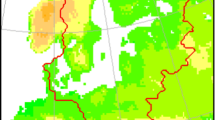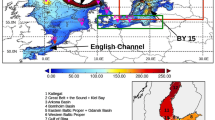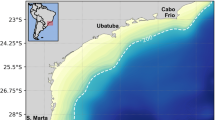Abstract.
Sea surface temperatures and salinity profiles in the Baltic Sea have been analyzed under different climate conditions using a 3D coupled ice-ocean model. As a reference, hindcast simulations for the period 1980–93 have been performed using observed three-hourly meteorological forcing fields and observed monthly river runoff. The results are compared with available observations from monitoring stations. The observed Baltic Sea climate is well reproduced by the model. Furthermore, two sets of 9-year time slice experiments have been performed using results from an atmospheric regional climate model as forcing. One of the time slice sets represents pre-industrial greenhouse conditions (control simulation), and the other set represents a global warming condition with a 150% increase in equivalent CO2 concentrations (scenario simulation) with lateral boundary conditions from the global atmosphere-ocean general circulation model, HadCM2. To simulate river runoff, a large-scale hydrological model has been applied. As the time slices are too short to properly spin up initial stratification for future climate, salinity is treated as an uncertainty factor. An extreme condition is obtained by integrating the Baltic Sea model for a period of 100 years while assuming that no salt water inflow will occur in the future. Salinity in the Gotland Basin decreases in the surface layer by about 3 to 4 psu and in the bottom layer by about 6 to 6.5 psu. The final quasi-equilibrium is characterized by salinities of 2.8 psu (minimum at the surface) to 6.5 psu (maximum at the bottom). The area averaged annual mean sea surface temperature change between scenario and control run is about 2.3 °C. The warming in different seasons is almost the same. The computational effective time slice approach in dynamical downscaling experiments is regarded as a feasible technique to regionalize global climate change experiments in the Baltic Sea.
Similar content being viewed by others
Author information
Authors and Affiliations
Additional information
Electronic Publication
Rights and permissions
About this article
Cite this article
Meier, .H. Regional ocean climate simulations with a 3D ice-ocean model for the Baltic Sea. Part 1: model experiments and results for temperature and salinity. Climate Dynamics 19, 237–253 (2002). https://doi.org/10.1007/s00382-001-0224-6
Received:
Accepted:
Issue Date:
DOI: https://doi.org/10.1007/s00382-001-0224-6




